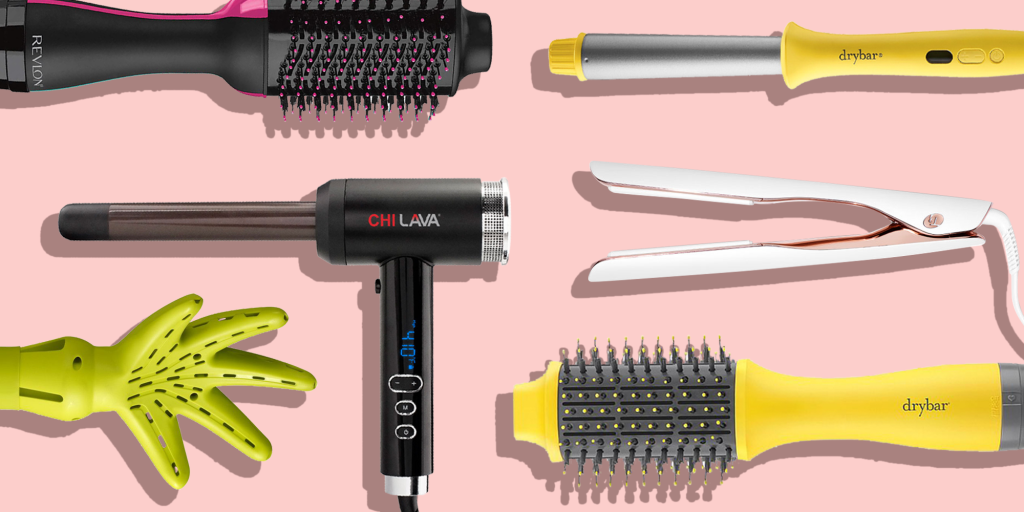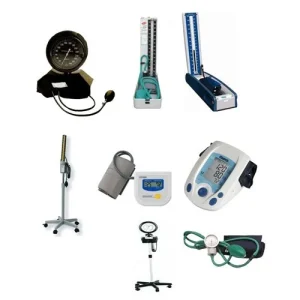Hair Styling Tool: What It Does, How It Works, Applications, and Safe Usage Tips

Hair styling tools are essential items for anyone who wants to achieve a variety of looks and styles. Whether you’re curling, straightening, or adding volume to your hair, these tools make the process quicker and more efficient. In this article, we’ll explore the purpose of hair styling tools, how they function, the common types available, their practical uses, and tips for safe usage.
1. What Is a Hair Styling Tool? (Introduction, Common Types, and Uses)
A hair styling tool refers to any device used to alter, shape, or style hair. From professional salons to home use, these tools are designed to make hairstyling easier and more versatile, allowing users to achieve a wide range of looks from sleek and smooth to voluminous curls.
Common Types of Hair Styling Tools:
- Hair Straighteners: Also known as flat irons, these tools use heat to smooth and straighten hair. They are popular for creating sleek and polished hairstyles.
- Hair Curlers/Wands: These tools are designed to curl hair into various shapes, from tight ringlets to loose waves, depending on the barrel size.
- Blow Dryers: Blow dryers use hot air to dry and style hair quickly. They are versatile and essential for most hairstyling routines, especially when combined with different attachments like diffusers or concentrators.
- Hair Rollers: Rollers are used to create volume and curls in the hair. They can be heated or non-heated and come in different sizes to achieve various curl types.
- Hot Brushes: A hybrid of a brush and a blow dryer, hot brushes are used for smoothing, straightening, and adding volume to hair with the added benefit of a brush-like structure.
- Curling Irons: These are similar to hair curlers but have a clamp that holds the hair in place while it is heated, helping to create different curl types.
Uses of Hair Styling Tools:
- Straightening Hair: Flat irons and blow dryers are commonly used to create smooth, straight hair.
- Creating Curls or Waves: Curling irons, wands, and rollers help create bouncy curls, soft waves, or beachy hair.
- Adding Volume: Blow dryers, hot brushes, and rollers are used to add volume and lift to the hair, making it look fuller.
- Shaping and Texturizing: These tools can also be used to add texture, create defined layers, or shape hair for a specific style.
2. How Do Hair Styling Tools Work? (Principle of Operation and Key Components)
Hair styling tools work by using heat, pressure, or air to change the structure or shape of the hair. The effectiveness of each tool depends on the method it uses and the materials from which it is made.
Key Components of Hair Styling Tools:
- Heating Plates or Barrels: In hair straighteners and curling irons, these metal or ceramic plates or barrels are used to distribute heat evenly, enabling them to change the structure of the hair.
- Heating Element: This is the part of the tool that generates heat, whether through electricity or a battery-powered system.
- Temperature Control: Many modern styling tools come with adjustable temperature settings, allowing you to choose the right heat level for your hair type.
- Handle and Grip: Most tools have ergonomic handles for easy use and control. Heat-resistant grips prevent burns during styling.
- Cord or Battery: While many styling tools are corded for constant power, some cordless versions run on rechargeable batteries for greater flexibility and convenience.
- Airflow Mechanism (for blow dryers): Blow dryers use fans to blow hot air through a nozzle to dry and style hair. This helps to reduce drying time and shape the hair simultaneously.
How They Work:
- Hair Straighteners: These tools use two heated plates that clamp around your hair to apply even heat. The heat breaks down the hair’s natural bonds, allowing it to be reshaped into a straight form.
- Hair Curlers and Wands: These tools heat up a cylindrical barrel, which you wrap your hair around. The heat softens the hair’s natural structure and creates the desired curl or wave.
- Blow Dryers: The heating element inside the dryer warms the air, which is then blown through a nozzle. The hot air helps speed up the drying process and allows you to shape and style your hair as it dries.
3. Where Are Hair Styling Tools Used? (Practical Applications)
Hair styling tools are used in various contexts, from personal grooming to professional hairstyling in salons. These tools are incredibly versatile and can be used in different settings to achieve different styles.
Common Applications:
- At-Home Styling: Many people use hair styling tools at home for everyday styling needs, such as straightening hair for work or curling it for a special event.
- Professional Salons: Hairstylists use advanced versions of these tools to create intricate styles for clients. From glamorous blowouts to flawless updos, professional tools are used to meet clients’ specific styling requirements.
- Special Occasions: Hair tools like curling irons and straighteners are often used to create formal hairstyles for weddings, parties, and other special events.
- Hair Texturizing: For those who want more textured, voluminous, or layered hairstyles, these tools can help define curls, waves, and add volume for a fuller look.
4. How to Use Hair Styling Tools Safely (Safety Tips and Important Considerations)
Using hair styling tools involves heat and electricity, which can pose risks if not used properly. Here are some tips to ensure you use your tools safely.
Safety Tips for Using Hair Styling Tools:
- Read the Instruction Manual: Before using any new styling tool, always read the user manual for specific instructions and safety precautions.
- Use Heat Protectant: Always apply a heat protectant spray or serum to your hair before using heated tools to prevent heat damage and maintain hair health.
- Check the Temperature Settings: Use the appropriate temperature for your hair type. Fine or damaged hair should be styled with lower heat settings, while thicker or coarse hair may require higher temperatures.
- Unplug After Use: Always unplug your styling tools after use to avoid electrical hazards and to allow the tool to cool down properly.
- Avoid Wet Hair: Never use hair styling tools, such as flat irons or curling irons, on wet hair unless the tool is specifically designed for wet-to-dry styling.
- Keep Hair Away from the Heating Element: When using straighteners or curling irons, ensure that your hair does not touch the heated parts directly, as this can cause burns or damage.
- Allow Cooling Time: After use, always allow the tool to cool down completely before storing it to avoid fire hazards.
- Store Properly: Store styling tools in a cool, dry place away from moisture and heat sources to prolong their lifespan and maintain safe usage.
Conclusion
Hair styling tools are indispensable for creating a wide variety of looks and styles, whether you’re at home or in a salon. Understanding how these tools work, their various applications, and how to use them safely ensures you can achieve your desired hair style while maintaining hair health and safety. By following proper usage and maintenance practices, you can enjoy the benefits of these tools for years to come, all while keeping your hair in great shape.





